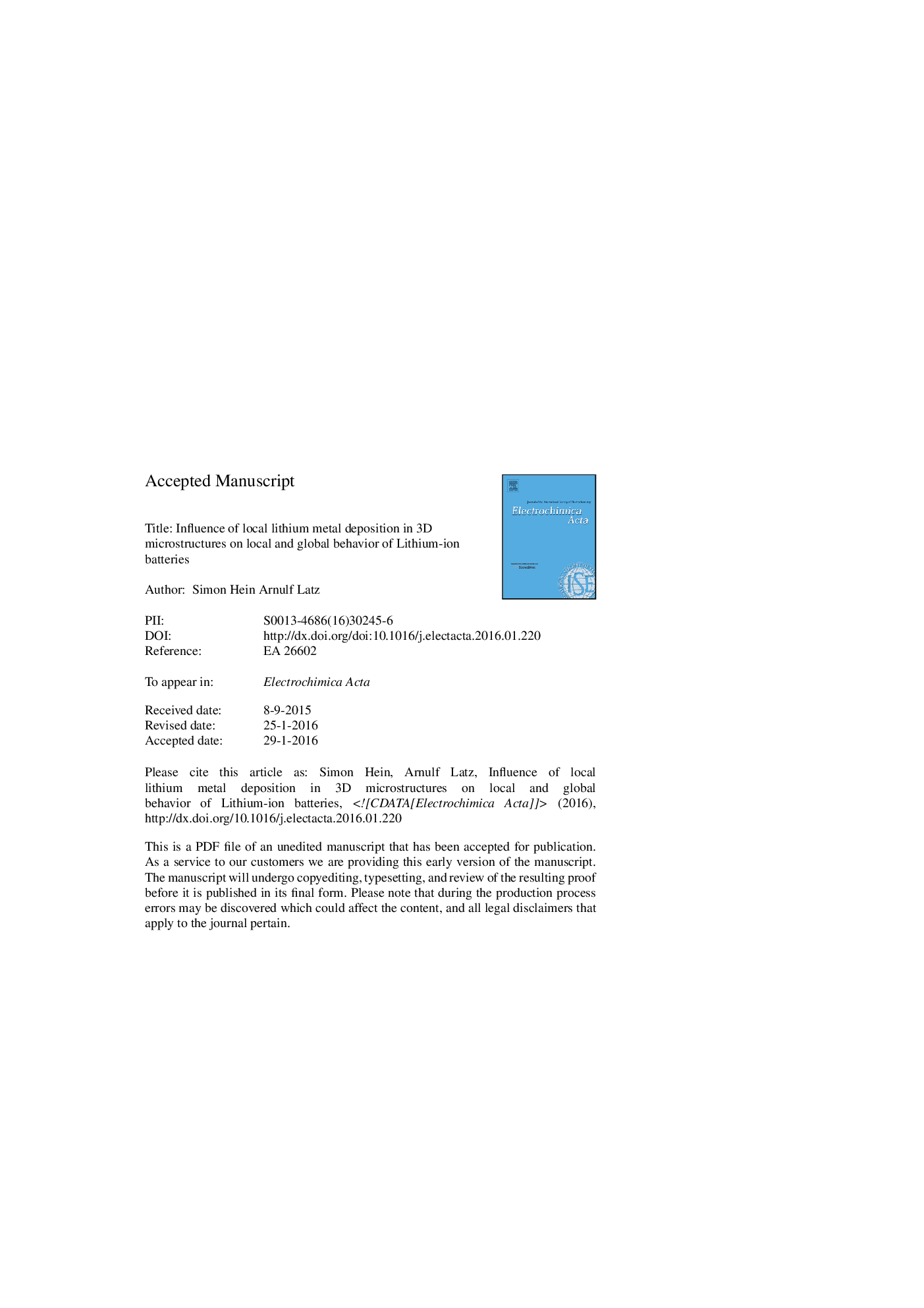| Article ID | Journal | Published Year | Pages | File Type |
|---|---|---|---|---|
| 6607645 | Electrochimica Acta | 2016 | 57 Pages |
Abstract
One of the major degradation processes in lithium ion batteries is the deposition of metallic lithium on the surface of the active particles in the negative electrode. In this paper we present a fully 3D microstructure resolved simulation of the influence of plated lithium on the cell potential during discharge depending on the amount and position of plated lithium. Our simulations give insight on the most probable position of the first occurrence of plating within the electrode depending on applied current and ambient temperatures as well as on the subtle local electric current distributions during stripping of plated lithium upon discharge. Specifically a stripping induced intercalation of lithium ions in the supporting graphite material during discharge is discovered. This phenomenon, easily accessible to microstructure resolved simulations, leads to a violation of the relation between transferred charge during stripping and the amount of plated lithium. As a consequence the amount of plated lithium cannot be uniquely determined from the applied current and the length of the potential plateau during stripping. We show that the value and length of the plateau depends on the amount of plated lithium, the fraction of the surface area covered by lithium and the applied current.
Related Topics
Physical Sciences and Engineering
Chemical Engineering
Chemical Engineering (General)
Authors
Simon Hein, Arnulf Latz,
